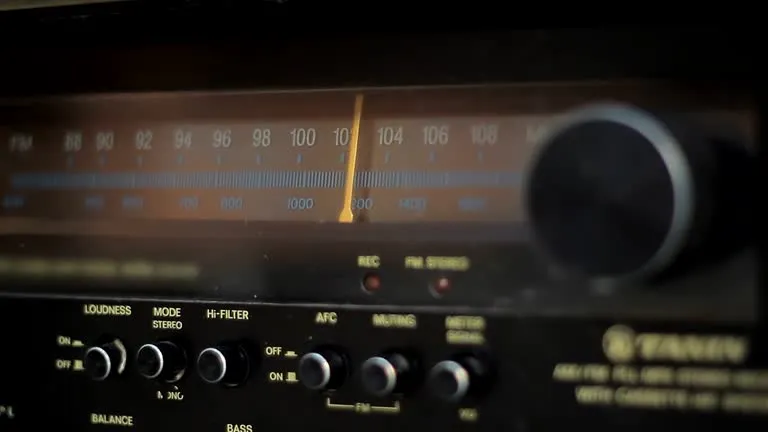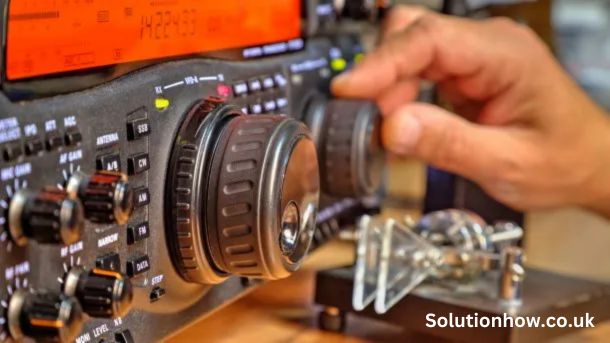Amateur radio, or “ham radio,” has long been a vital communication tool for enthusiasts, emergency responders, and technology aficionados across the world. In Malaysia, including Tanjung Malim Radio Amateur Frequency, amateur radio plays an essential role in connecting communities, fostering technical innovation, and providing vital communication channels during emergencies. This article provides an in-depth look at the amateur radio frequencies used in Tanjung Malim, including the legal framework, popular frequencies, the local amateur community, and the steps to get started as a ham radio operator in the region.
1. Understanding Amateur Radio in Malaysia
Amateur radio refers to the use of designated radio frequencies for personal, non-commercial communication. Operators of amateur radio stations, or “hams,” communicate using various frequency bands and specialized equipment. While amateur radio is often used for personal conversations, it also plays an important role in public safety, scientific research, and international communications.
The MCMC oversees the licensing and operation of amateur radio frequencies to ensure that they are used safely and without interference to other services. To operate legally as a ham radio operator in Malaysia, individuals must obtain a license by passing an examination that covers radio regulations, technical knowledge and operating procedures.
2. Key Frequency Bands for Amateur Radio
The frequencies used in amateur radio are organized into bands, each serving a distinct purpose. Each band has its own set of characteristics, with some bands suited for short-range communications and others ideal for long-distance or global communication.
a. HF Bands (3–30 MHz)
The HF bands are used primarily for long-range communication. These frequencies allow signals to travel over long distances, sometimes even across continents, by reflecting off the ionosphere. Some of the key HF bands include:
- 80 meters: 3.5 – 4.0 MHz
- 40 meters: 7.0 – 7.3 MHz
- 20 meters: 14.0 – 14.35 MHz
- 15 meters: 21.0 – 21.45 MHz
These frequencies are most effective during times of low atmospheric interference, such as during the sun’s peak activity.
b. VHF Bands (30–300 MHz)
VHF frequencies are used for local communication, often within a regional area. These frequencies are typically line-of-sight, meaning that communication range is largely determined by the height of the antenna and the surrounding terrain. The most commonly used VHF bands are:
- 2 meters: 144 – 148 MHz
- 6 meters: 50 – 54 MHz
VHF bands are popular for local communications, especially in urban areas, where repeaters are used to extend the range.
c. UHF Bands (300 MHz – 3 GHz)
UHF bands provide excellent communication capabilities for short-range transmissions. These frequencies are ideal for densely populated areas with obstacles like buildings, as their signals can travel through structures more effectively than higher-frequency bands. Common UHF bands include:
- 70 centimeters: 430 – 440 MHz
- 33 centimeters: 902 – 928 MHz
UHF bands are often used for local repeater communications, including the Tanjung Malim area, to help expand coverage over a larger geographic region.
d. Microwave and Experimental Bands
While less commonly used by amateur operators, the microwave bands and certain experimental frequencies enable technical experimentation and communication. These include higher frequencies for satellite communications, packet radio, and other niche applications. These bands often require specialized equipment and technical expertise.
3. The Amateur Radio Community in Tanjung Malim Radio Amateur Frequency
Tanjung Malim Radio Amateur Frequency, located in Perak, Malaysia, is home to a growing amateur radio community. The town’s location offers several advantages for ham radio enthusiasts. Its proximity to major urban areas like Kuala Lumpur allows for easy access to larger repeaters and enhanced communication options, while its relatively rural setting means fewer interference sources that might disrupt radio signals.
Local amateur radio clubs, such as the Perak Amateur Radio Club (PARC), offer a supportive community for individuals interested in joining the hobby. These clubs provide training sessions, events, and workshops that teach newcomers how to operate radios and navigate the licensing process. Additionally, the clubs play a critical role in public service by offering reliable communication services during natural disasters or other emergencies.
One of the key functions of the amateur radio community in Tanjung Malim, as in other parts of Malaysia, is emergency communication. When traditional communication infrastructure is down, ham radio operators are often the first to establish contact with those in need of help, providing vital coordination during times of crisis.
4. Popular Amateur Radio Frequencies in Tanjung Malim Radio Amateur Frequency
In Tanjung Malim, as in the rest of Malaysia, amateur radio operators primarily use VHF, UHF, and HF frequencies. Local repeaters and simplex frequencies provide the most common communication methods. Repeaters are devices that receive a signal on one frequency and re-transmit it on another, expanding the communication range for operators.
a. VHF and UHF Repeaters
Repeaters are crucial for extending communication ranges, especially in areas like Tanjung Malim Radio Amateur Frequency where geographical features may impede direct line-of-sight communication. The common repeater frequencies in Malaysia, which are also relevant to Tanjung Malim, include:
- 2-meter repeater: Input frequency 144.600 MHz, Output frequency 145.000 MHz
- 70cm repeater: Input frequency 430.000 MHz, Output frequency 438.000 MHz
These repeater systems enable operators to communicate over greater distances, often connecting distant regions and providing a reliable channel for both daily communications and emergency use.
b. Simplex Frequencies
Simplex frequencies allow two operators to communicate directly without the use of a repeater.These frequencies are generally short ranged and perfect for momentary conversations which strictly involve two people or parties. In Malaysia, the commonly used simplex frequencies include:
- 2-meter simplex: 144.500 MHz
- 70cm simplex: 433.500 MHz
Simplex communication is also widely used during contests and casual exchanges, where operators connect directly with one another without relying on repeaters.
c. Emergency Communication Frequencies
Emergency communication is one of the primary functions of amateur radio. During natural disasters or other emergencies, ham radio operators are often the first to provide communication when traditional channels are unavailable. Some of the emergency frequencies used in Tanjung Malim Radio Amateur Frequency and other regions include:
- 145.500 MHz: This frequency is often used as a calling frequency for emergency purposes on the 2-meter band.
- 433.000 MHz: Commonly used for emergency communication on the 70cm band.
These frequencies are monitored by ham operators around the clock to provide assistance during emergencies and to ensure reliable communication when it is needed most.
5. Steps to Becoming an Amateur Radio Operator in Tanjung Malim Radio Amateur Frequency

For those interested in getting started in amateur radio in Tanjung Malim, here are the steps to follow:
a. Obtain a License
To legally operate a ham radio station in Malaysia, individuals must obtain a license from the Malaysian Communications and Multimedia Commission (MCMC). To qualify for a license, prospective operators must pass an exam that covers topics such as radio theory, regulations, and operating procedures. There are different license categories:
- Class A: The most advanced license, granting access to all amateur bands and higher transmission power limits.
- Class B: A more limited license, restricting the operator to certain bands and lower power.
- Class C: A beginner’s license, which provides access to the basic frequencies with minimal power output.
b. Join an Amateur Radio Club
Joining a local amateur radio club, such as the Perak Amateur Radio Club (PARC), is a great way to learn from experienced operators and get involved in the community. These clubs offer training resources, networking opportunities, and practical experience, all of which are helpful when preparing for the licensing exam.
c. Get the Right Equipment
Once licensed, operators will need the necessary equipment to start communicating. Essential items include:
- Transceivers: A radio device for both transmitting and receiving signals.
- Antennas: Proper antenna placement enhances signal strength and range.
- Power Supply: A reliable power source is crucial for consistent operation.
These items can be purchased from local dealers or online retailers. Many ham radio operators also purchase used equipment as an affordable entry point.
d. Start Operating
After acquiring the necessary equipment and obtaining a license, amateur radio operators can begin communicating with others. They can join local net sessions, participate in radio contests, or simply connect with other hams to exchange information.
Also Read: FightingforFutures
6. Conclusion
Amateur radio in Tanjung Malim Radio Amateur Frequency is a vibrant and growing community that offers countless opportunities for personal growth, technical learning, and community service. By utilizing local frequencies, operators can engage in diverse activities, from casual conversations to emergency communication efforts that help save lives. Whether you’re a seasoned operator or a newcomer looking to explore the world of ham radio, Tanjung Malim offers the resources and community support necessary to embark on this rewarding hobby.
For those interested in getting started, the journey involves obtaining a license, joining a local club, acquiring the right equipment, and contributing to the broader amateur radio network. With its accessible frequencies, rich community support, and important role in public service, Tanjung Malim is an excellent place to begin your amateur radio adventure.



